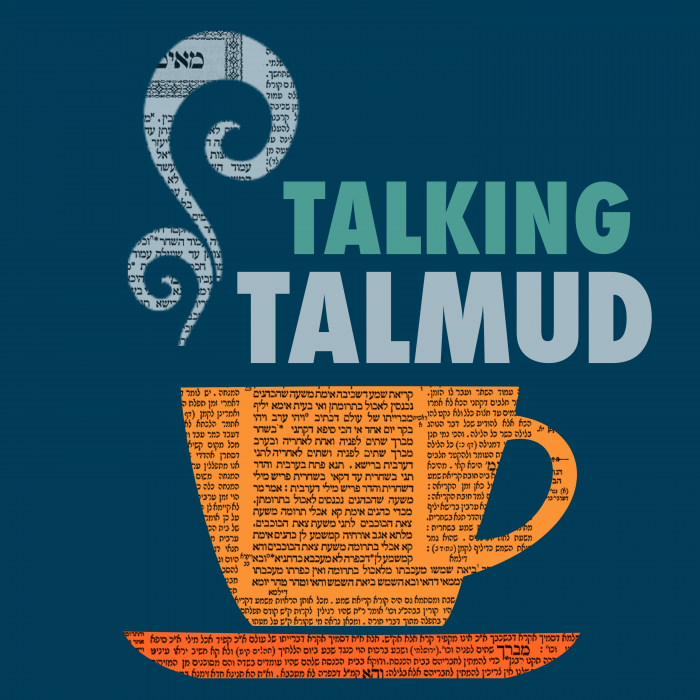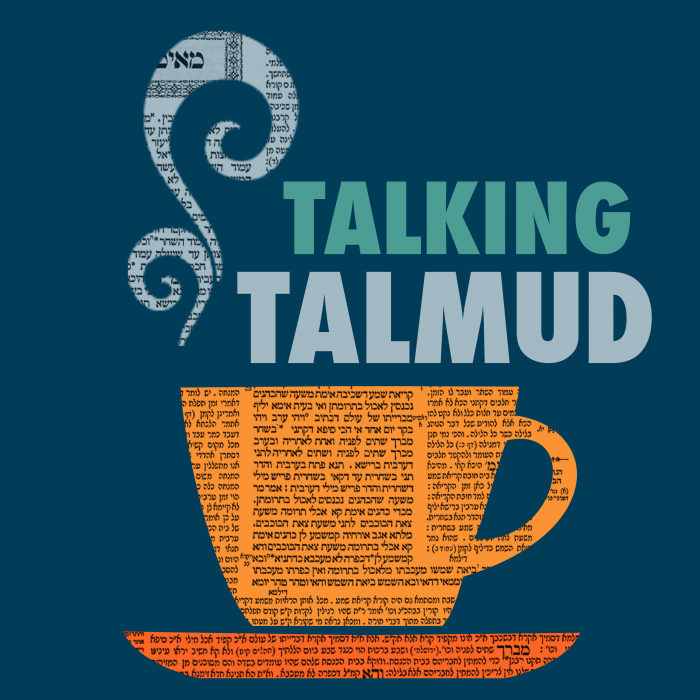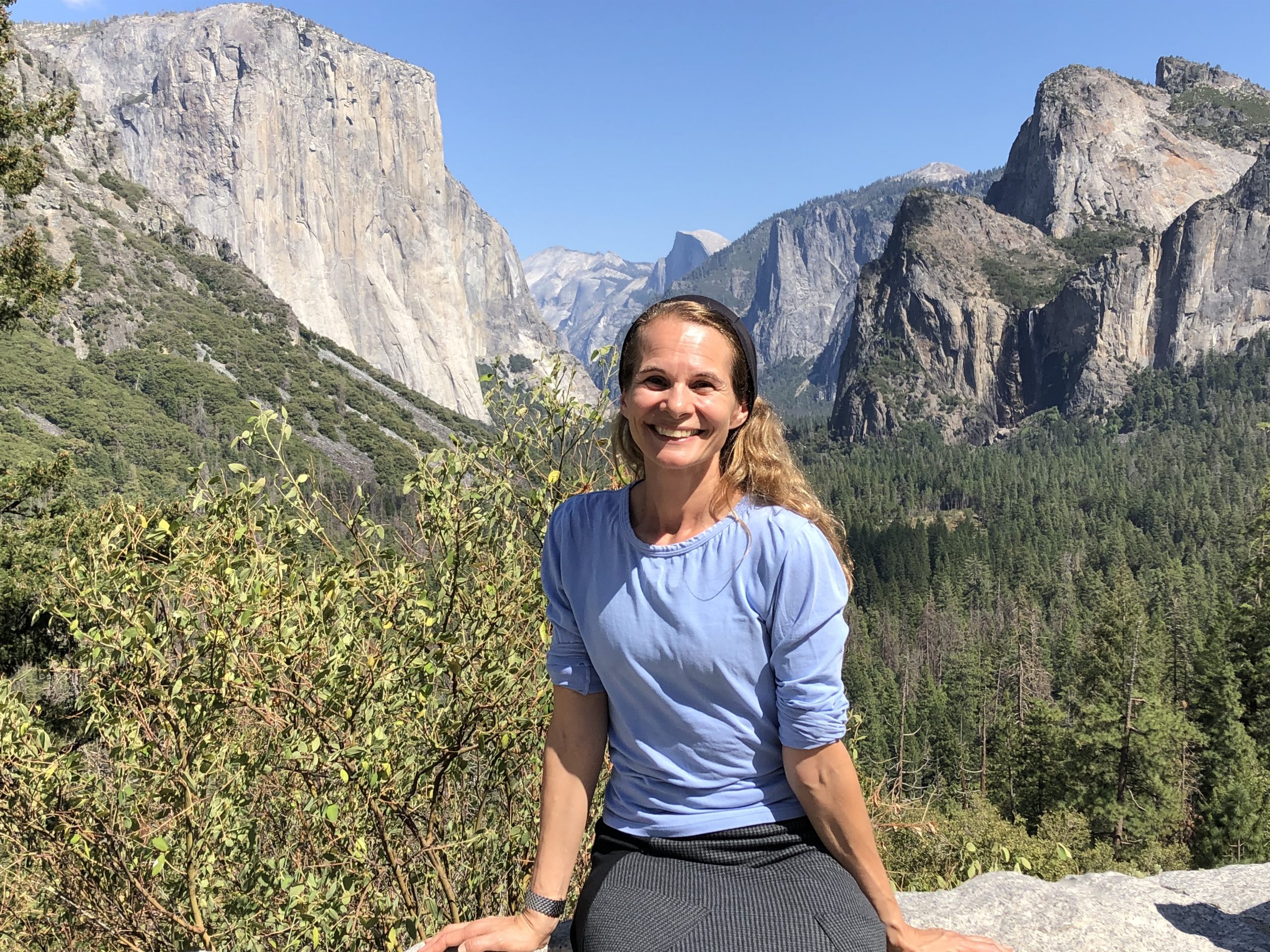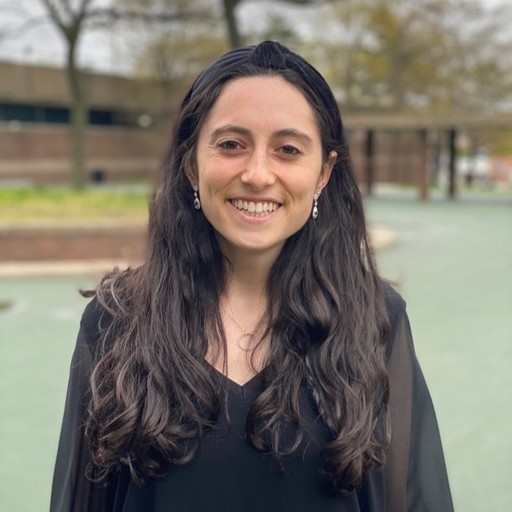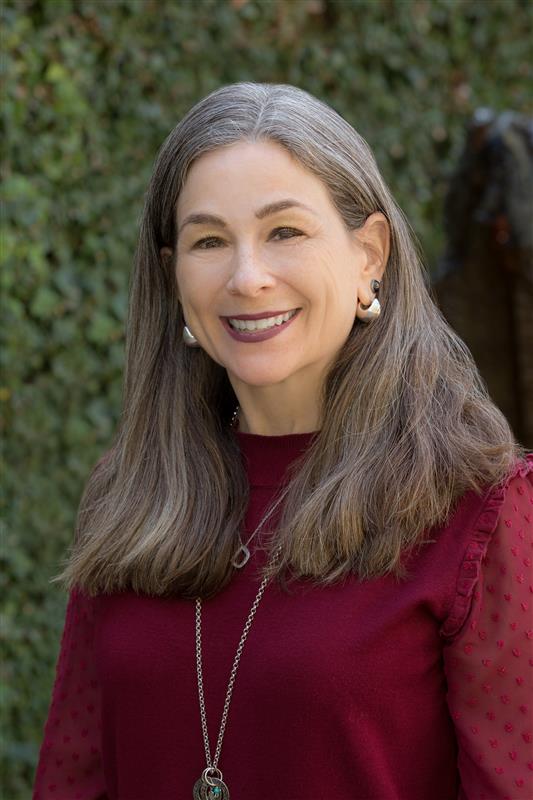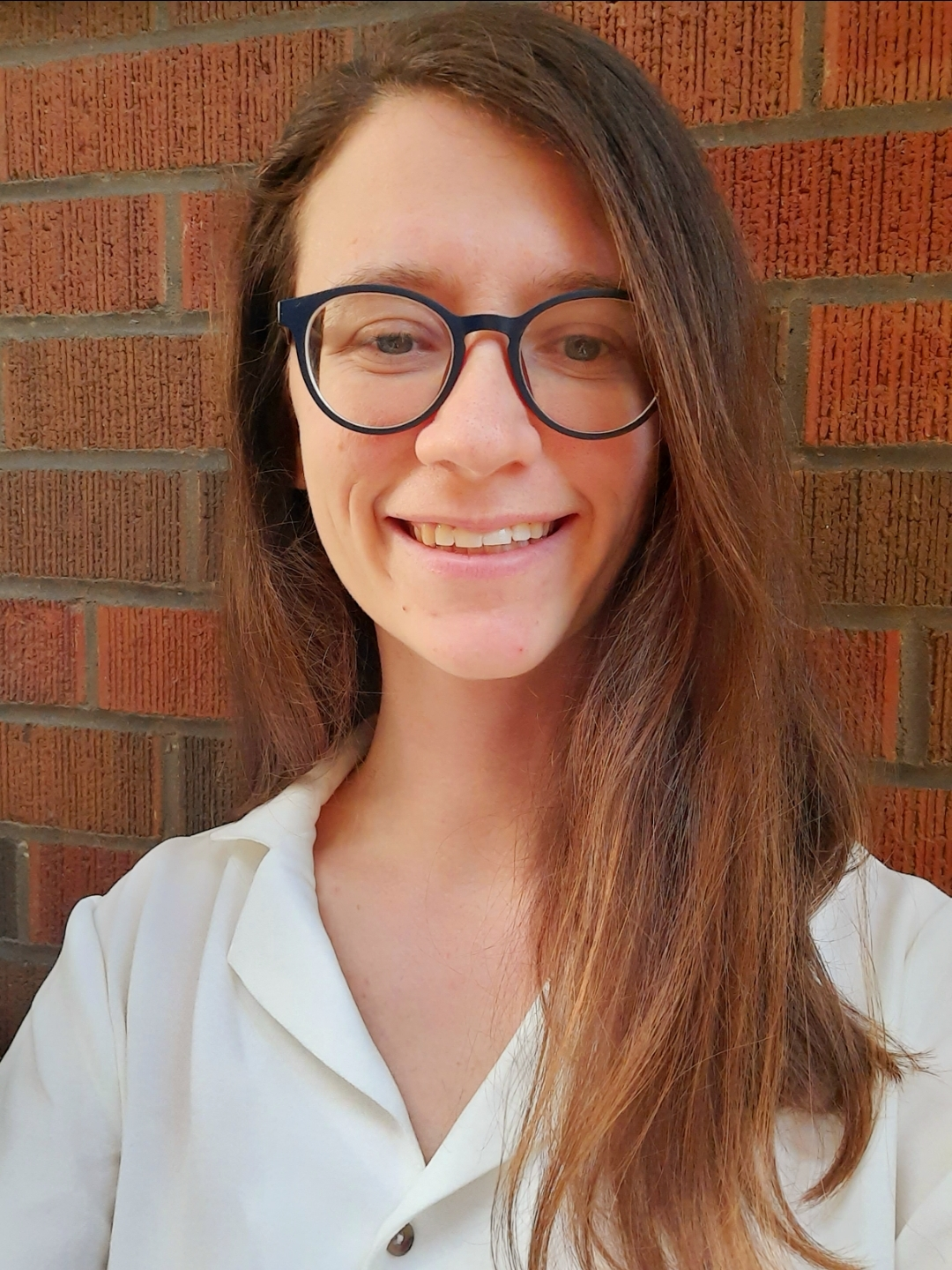Bava Kamma 3
הַגָּלָל עַד תֻּמּוֹ״.
the tooth until it be all gone” (I Kings 14:10).
אָמַר מָר: ״וְשִׁלַּח״ זוֹ הָרֶגֶל, וְכֵן הוּא אוֹמֵר: ״מְשַׁלְּחֵי רֶגֶל הַשּׁוֹר וְהַחֲמוֹר״. טַעְמָא דִּכְתַב רַחֲמָנָא ״מְשַׁלְּחֵי רֶגֶל הַשּׁוֹר וְהַחֲמוֹר״, הָא לָאו הָכִי – בְּמַאי מוֹקְמַתְּ לַהּ?
The Master said in the baraita just cited: “And he sends forth,” this is a reference to the category of Trampling, and likewise it says: “Happy are you that sow beside all waters that send forth the feet of the ox and the donkey” (Isaiah 32:20). The Gemara infers: The reason that the phrase: “And he sends forth,” is interpreted as a reference to the category of Trampling is that the Merciful One writes: “That send forth the feet of the ox and the donkey.” The Gemara asks: Were it not for this verse, with regard to what would you have interpreted that phrase?
אִי קֶרֶן – כְּתִיב! אִי שֵׁן – כְּתִיב!
If you say that it could have been interpreted as referring to Goring, that cannot be, as Goring is written in a different verse. If you say that it could have been interpreted as referring to Eating, that too cannot be, as Eating is written in a different verse. Perforce the reference is to Trampling, and the baraita had no need to prove this from the phrase: “That send forth the feet.”
אִצְטְרִיךְ; סָלְקָא דַעְתָּךְ אָמֵינָא: אִידֵּי וְאִידֵּי אַשֵּׁן, וְהָא דְּמִכַּלְיָא קַרְנָא, הָא דְּלָא מִכַּלְיָא קַרְנָא; קָא מַשְׁמַע לַן.
The Gemara answers that it is necessary for the baraita to cite the verse: “That send forth the feet of the ox and the donkey,” as it could enter your mind to say that both this phrase: “And he sends forth,” and that phrase: “And it consumed,” are referring to the primary category of Eating, and that phrase: “And it consumed,” is referring to a case where the object damaged is completely destroyed, and this phrase: “And he sends forth,” is referring to a case where the object damaged is not completely destroyed. Therefore, the verse “that send forth the feet of the ox and the donkey” teaches us that the phrase “and he sends forth,” is referring to Trampling.
וְהַשְׁתָּא דְּאוֹקֵימְנָא אַרֶגֶל, שֵׁן דְּלָא מִכַּלְיָא קַרְנָא – מְנָלַן?
The Gemara asks: And now that we have interpreted that the phrase “and he sends forth” is referring to Trampling, from where do we derive that one is liable with regard to acts categorized as Eating in a case where the object damaged is not completely destroyed? The primary category of Eating is derived from the phrase “and it consumed.” The connotation of that phrase is damage in which the object is completely destroyed.
דּוּמְיָא דְרֶגֶל, מָה רֶגֶל – לָא שְׁנָא מִכַּלְיָא קַרְנָא, וְלָא שְׁנָא לָא מִכַּלְיָא קַרְנָא; אַף שֵׁן – לָא שְׁנָא מִכַּלְיָא קַרְנָא, וְלָא שְׁנָא לָא מִכַּלְיָא קַרְנָא.
The Gemara answers: It is derived because the category of Eating is juxtaposed to and therefore similar to the category of Trampling: Just as with regard to liability for the category of Trampling, it is no different if the object damaged is completely destroyed and it is no different if the object damaged is not completely destroyed; so too, with regard to liability for the category of Eating, it is no different whether the object damaged is completely destroyed and it is no different whether the object damaged is not completely destroyed.
אָמַר מָר: ״וּבִעֵר״ זוֹ הַשֵּׁן, וְכֵן הוּא אוֹמֵר: ״כַּאֲשֶׁר יְבַעֵר הַגָּלָל עַד תֻּמּוֹ״. טַעְמָא דִּכְתַב רַחֲמָנָא ״כַּאֲשֶׁר יְבַעֵר הַגָּלָל עַד תֻּמּוֹ״, הָא לָאו הָכִי – בְּמַאי אוֹקֵימְנָא לַהּ?
The Master said in that baraita: When the verse states: “And it consumed” (Exodus 22:4), this is a reference to the category of Eating. And likewise it states: “And I will utterly sweep away the house of Jeroboam, as one consumes with the tooth until it be all gone” (I Kings 14:10). The Gemara infers: The reason that the phrase “and it consumed” is interpreted as a reference to the category of Eating is that the Merciful One writes: “As one consumes with the tooth until it be all gone.” The Gemara asks: Were it not for this verse, with regard to what case would you have interpreted that phrase?
אִי קֶרֶן – כְּתִיב! אִי רֶגֶל – כְּתִיב! אִיצְטְרִיךְ; סָלְקָא דַּעְתָּךְ אָמֵינָא: אִידֵּי וְאִידֵּי אַרֶגֶל, הָא דְּאָזֵיל מִמֵּילָא, הָא דְּשַׁלַּח שַׁלּוֹחֵי; קָא מַשְׁמַע לַן.
If you say that it could have been interpreted as referring to Goring, that cannot be, as Goring is written in a different verse. And if you say that it could have been interpreted as referring to Trampling, that too cannot be, as Trampling, is written in a different verse. Perforce the reference is to Eating. The Gemara answers that it is necessary for the baraita to cite the verse: “As one consumes with the tooth until it be all gone,” as it could enter your mind to say that both this phrase: “And it consumed,” and that phrase: “And he sends forth,” are referring to the primary category of Trampling, and this phrase: “And it consumed,” is referring to a case where the animal went and caused damage on its own, and that phrase: “And he sends forth,” is referring to a case where the owner sent the animal to cause damage. Therefore, the verse “as one consumes with the tooth until it be all gone” teaches us that the phrase “and it consumed” is referring to Eating.
וְהַשְׁתָּא דְּאוֹקֵי אַשֵּׁן, רֶגֶל דְּאָזְלָה מִמֵּילָא – מְנָלַן?
The Gemara asks: And now that we have interpreted that the phrase “and it consumed” is referring to Eating, from where do we derive that one is liable with regard to actions categorized as Trampling in a case where the animal went and caused damage on its own? The primary category of Trampling is derived from the phrase “and he sends forth.” The connotation of that phrase is a case where the owner sent the animal to cause damage.
דּוּמְיָא דְשֵׁן, מָה שֵׁן – לָא שְׁנָא שַׁלְּחַהּ שַׁלּוֹחֵי, לָא שְׁנָא דְּאָזֵל מִמֵּילָא; אַף רֶגֶל – לָא שְׁנָא שַׁלְּחַהּ שַׁלּוֹחֵי, לָא שְׁנָא אָזְלָה מִמֵּילָא.
The Gemara answers: It is derived because the category of Trampling is juxtaposed to and therefore similar to the category of Eating: Just as with regard to liability for the category of Eating, it is no different if the owner sent the animal to cause damage and it is no different if the animal went and caused damage on its own, so too, with regard to liability for the category of Trampling, it is no different if the owner sent the animal to cause damage and it is no different if the animal went and caused damage on its own.
וְלִכְתּוֹב רַחֲמָנָא ״וְשִׁלַּח״, וְלָא בָּעֵי ״וּבִעֵר״; דְּמַשְׁמַע רֶגֶל וּמַשְׁמַע שֵׁן – מַשְׁמַע רֶגֶל, דִּכְתִיב: ״מְשַׁלְּחֵי רֶגֶל הַשּׁוֹר וְהַחֲמוֹר״; וּמַשְׁמַע שֵׁן, דִּכְתִיב: ״וְשֵׁן בְּהֵמֹת אֲשַׁלַּח בָּם״!
The Gemara suggests: And let the Merciful One write only the first phrase, “and he sends forth,” and there would be no need to write the second phrase, “and it consumed,” as the phrase “and he sends forth” connotes Trampling and connotes Eating. It connotes Trampling, as it is written: “That send forth the feet of the ox and the donkey” (Isaiah 32:20), and it connotes Eating, as it is written: “And the teeth of animals I will send forth against them” (Deuteronomy 32:24).
אִי לָאו קְרָא יַתִּירָה, הֲוָה אָמֵינָא: אוֹ הָא אוֹ הָא – אוֹ רֶגֶל דְּהֶזֵּיקוֹ מָצוּי, אוֹ שֵׁן דְּיֵשׁ הֲנָאָה לְהֶזֵּיקוֹ.
The Gemara answers: If not for the additional phrase in the verse, “and it consumed,” I would say that the verse refers either to this category of damage or to that category of damage: It refers either to Trampling, where its damage is commonplace, or to Eating, where there is pleasure for the animal in the course of its causing damage.
מִכְּדֵי שְׁקוּלִין הֵן, וַיָּבֹאוּ שְׁנֵיהֶם – דְּהֵי מִנַּיְיהוּ מַפְּקַתְּ? אִיצְטְרִיךְ; סָלְקָא דַּעְתָּךְ אָמֵינָא: הָנֵי מִילֵּי הֵיכִי דְּשַׁלַּח שַׁלּוֹחֵי, אֲבָל אָזְלָא מִמֵּילָא – לָא; קָא מַשְׁמַע לַן.
The Gemara asks: Since both interpretations are of equal validity, let both of them come and be derived from the verse, as which of them will you exclude? Since there is no reason to prefer one category over the other, perforce both are derived, and the phrase “and it consumed” is unnecessary. The Gemara answers: The additional phrase is necessary, as it might enter your mind to say that this matter of liability applies only in a case where the owner sent the animal to cause damage, but in a case where the animal went and caused damage on its own, the owner would not be liable for the damage. Therefore, the phrase “and it consumed” teaches us that the owner is liable even in a case where the ox went and caused damage on its own.
תּוֹלָדָה דְשֵׁן מַאי הִיא? נִתְחַכְּכָה בְּכוֹתֶל לַהֲנָאָתָהּ, וְטִינְּפָה פֵּירוֹת לַהֲנָאָתָהּ.
Having clarified the sources for the primary categories of Eating and Trampling, the Gemara proceeds to identify their subcategories and to determine whether it was with regard to these primary categories of damage that Rav Pappa said: There are among them some whose subcategories are dissimilar to them. What is a subcategory of Eating? It is a case where, for example, an animal rubbed against a wall for its pleasure and damaged the wall, or where it sullied produce by rolling on it for its pleasure.
מַאי שְׁנָא שֵׁן – דְּיֵשׁ הֲנָאָה לְהֶזֵּיקוֹ, וּמָמוֹנְךָ וּשְׁמִירָתוֹ עָלֶיךָ; הָנֵי נָמֵי – יֵשׁ הֲנָאָה לְהֶזֵּיקָן, וּמָמוֹנְךָ וּשְׁמִירָתָן עָלֶיךָ! אֶלָּא תּוֹלָדָה דְשֵׁן כְּשֵׁן, וְכִי קָאָמַר רַב פָּפָּא – אַתּוֹלָדָה דְרֶגֶל.
If so, what is different about Eating that it is defined as a unique primary category? What is different is that there is pleasure for the animal in the course of its causing damage, and the ox is your property, and responsibility for its safeguarding, to prevent it from causing damage, is incumbent upon you, its owner. In these subcategories of Eating, as well, there is pleasure for the animals in the course of the damage that they cause and the oxen are your property, and responsibility for their safeguarding, to prevent your oxen from causing damage, is incumbent upon you. Therefore, the subcategories of Eating are not dissimilar to the primary category. Rather, it is apparent that the status of a sub-category of Eating is like that of the primary category of Eating, and when Rav Pappa says: There are among them some whose subcategories are dissimilar to them, he is referring to a subcategory of Trampling.
תּוֹלָדָה דְרֶגֶל מַאי הִיא? הִזִּיקָה בְּגוּפָהּ דֶּרֶךְ הִילּוּכָהּ, בִּשְׂעָרָהּ דֶּרֶךְ הִילּוּכָהּ, בִּשְׁלִיף שֶׁעָלֶיהָ, בִּפְרוּמְבְּיָא שֶׁבְּפִיהָ, בְּזוֹג שֶׁבְּצַוָּארָהּ.
The Gemara asks: What is a subcategory of Trampling? The classification is applied in a case where, for example, an animal caused damage with its body, not its legs, in the course of its walking; or caused damage with its hair that became entangled with an object in the course of its walking; or caused damage with a rope that is upon it; or caused damage with a bit [bifrumbiya] that is in its mouth; or caused damage with a bell that is around its neck.
מַאי שְׁנָא רֶגֶל – דְּהֶזֵּיקוֹ מָצוּי, וּמָמוֹנְךָ וּשְׁמִירָתוֹ עָלֶיךָ; הָנֵי נָמֵי – הֶזֵּיקָן מָצוּי, וּמָמוֹנְךָ וּשְׁמִירָתָן עָלֶיךָ! אֶלָּא תּוֹלָדָה דְרֶגֶל כְּרֶגֶל, וְכִי קָאָמַר רַב פָּפָּא – אַתּוֹלָדָה דְבוֹר.
If so, what is different about Trampling that it is defined as a unique category? What is different is that its damage is commonplace, and the animal is your property, and responsibility for its safeguarding, to prevent it from causing damage, is incumbent upon you, its owner. In these subcategories of Trampling, as well, their damage is commonplace, and the oxen are your property, and responsibility for their safeguarding, to prevent them from causing damage, is incumbent upon you. Therefore, the subcategories of Trampling are not dissimilar to the primary category. Rather, it is apparent that the status of a subcategory of Trampling is like that of the primary category of Trampling, and when Rav Pappa says: There are among them some whose subcategories are dissimilar to them, he is referring to a subcategory of Pit.
תּוֹלָדָה דְבוֹר מַאי נִיהוּ? אִילֵּימָא אָב – עֲשָׂרָה, וְתוֹלָדָה – תִּשְׁעָה; לָא תִּשְׁעָה כְּתִיבִי, וְלָא עֲשָׂרָה כְּתִיבִי!
The Gemara examines that assertion: What is a subcategory of Pit? If we say that the primary category of Pit applies when, in the public domain, one leaves an uncovered pit that is ten handbreadths deep, and that is the pit mentioned in the Torah, and a subcategory of Pit applies when one leaves an uncovered pit that is nine handbreadths deep, there is no basis for that distinction, as neither nine handbreadths are written in the Torah, nor are ten handbreadths written in the Torah.
הָא לָא קַשְׁיָא; ״וְהַמֵּת יִהְיֶה לוֹ״ אָמַר רַחֲמָנָא, וְקִים לְהוּ לְרַבָּנַן, עֲשָׂרָה – עָבְדָן מִיתָה, תִּשְׁעָה – נְזִיקִין עָבְדִי, מִיתָה לָא עָבְדִי.
The Gemara explains: This is not difficult, as the Merciful One states in the Torah: “And the carcass shall be for him” (Exodus 21:34), and the Sages have an accepted tradition that a pit ten handbreadths deep causes the death of an animal that falls into it, but a pit nine handbreadths deep causes damage to an animal that falls into it but does not cause death. Accordingly, the pit written in the Torah (Exodus 21:33), which mentions the death of the animal that fell therein, is ten handbreadths deep. This is classified as the primary category of Pit, and a pit nine handbreadths deep is its subcategory.
סוֹף סוֹף, זֶה אָב לְמִיתָה, וְזֶה אָב לִנְזָקִין!
The Gemara asks: Ultimately, this pit that is ten handbreadths deep is a primary category of damage with regard to death, and that pit that is nine handbreadths deep is a primary category with regard to damage.
אֶלָּא אַאַבְנוֹ, סַכִּינוֹ וּמַשָּׂאוֹ שֶׁהִנִּיחָן בִּרְשׁוּת הָרַבִּים וְהִזִּיקוּ.
Rather, Rav Pappa’s statement: There are among them some whose subcategories are dissimilar to them, was stated in reference to these subcategories of Pit: His stone, his knife, or his load, any of which he placed in a public domain as obstacles, and they caused damage when people stumbled upon them.
הֵיכִי דָמֵי? אִי דְּאַפְקְרִינְהוּ – בֵּין לְרַב וּבֵין לִשְׁמוּאֵל, הַיְינוּ בּוֹר.
The Gemara asks: What are the circumstances where one is liable for damage caused by these obstacles? If it is a case where one declared these items ownerless, both according to the opinion of Rav and according to the opinion of Shmuel, cited later in the Gemara, these cases are a subcategory of Pit, as both Rav and Shmuel agree that any obstacle declared ownerless by its owner that causes damage in the public domain is a subcategory of Pit.
וְאִי דְּלָא אַפְקְרִינְהוּ – אִי לִשְׁמוּאֵל, דְּאָמַר: כּוּלָּם מִבּוֹרוֹ לָמַדְנוּ, הַיְינוּ בּוֹר; וְאִי לְרַב, דְּאָמַר: כּוּלָּם מִשּׁוֹרוֹ לָמַדְנוּ, הַיְינוּ שׁוֹר!
And if it is a case where one did not declare them ownerless, there is still a difficulty. If Rav Pappa’s statement is in accordance with the opinion of Shmuel, who says: We learned that one is liable for damage caused by all obstacles that he places in a public domain, whether or not he declares them ownerless, from the halakhot with regard to one’s pit, these cases are a subcategory of Pit. And if Rav Pappa’s statement is in accordance with the opinion of Rav, who says: We learned that one is liable for damage caused by all obstacles that he places in a public domain that he did not declare ownerless, from the halakhot with regard to one’s ox that gored another animal, these cases are a subcategory of Ox. With regard to the subcategories of Ox, the Gemara already established that their legal status is like that of the primary category of Ox.
מַאי שְׁנָא בּוֹר – שֶׁכֵּן תְּחִלַּת עֲשִׂיָּיתוֹ לְנֵזֶק, וּמָמוֹנְךָ וּשְׁמִירָתוֹ עָלֶיךָ; הָנֵי נָמֵי – תְּחִלַּת עֲשִׂיָּיתָן לְנֵזֶק, וּמָמוֹנְךָ וּשְׁמִירָתָן עָלֶיךָ! אֶלָּא תּוֹלָדָה דְבוֹר כְּבוֹר, וְכִי קָאָמַר רַב פָּפָּא – אַתּוֹלָדָה דְמַבְעֶה.
The Gemara asks concerning an obstacle that is a subcategory of Pit: What is different about Pit that it is defined it as a unique category? It is that its initial formation, i.e., the digging of the pit, is done in a manner that can result in damage, and it is your property, and responsibility for its safeguarding, to prevent it from causing damage to others, is incumbent upon you. In these subcategories of Pit, too, their initial formation, i.e., the placement of the obstacle in the public domain, is done in a manner that can result in damage, and they are your property, and responsibility for their safeguarding, to prevent them from causing damage, is incumbent upon you. Rather, it is apparent that the status of a subcategory of Pit is like that of the primary category of Pit, and when Rav Pappa says: There are among them some whose subcategories are dissimilar to them, he is referring to a subcategory of Maveh.
מַאי נִיהוּ? אִי לִשְׁמוּאֵל, דְּאָמַר: מַבְעֶה זוֹ שֵׁן – הָא אוֹקֵימְנָא תּוֹלָדָה דְשֵׁן כְּשֵׁן. אִי לְרַב, דְּאָמַר: מַבְעֶה זֶה אָדָם – מַאי אָבוֹת וּמַאי תּוֹלָדוֹת אִית בֵּיהּ?
The meaning of the term Maveh is not clear; therefore, the Gemara asks: What is the primary category of Maveh to whose subcategories the Gemara referred? If one suggests that Rav Pappa said his statement in accordance with the opinion of Shmuel, who says: Maveh, this is the category of Eating, this cannot be Rav Pappa’s intent. But didn’t we already establish that the legal status of a subcategory of Eating is like that of the primary category of Eating? Clearly, Rav Pappa was not referring to subcategories of Maveh. And if one suggests that Rav Pappa said his statement in accordance with the opinion of Rav, who says: Maveh, this is the primary category of Man, which includes damage caused by a person, not by his property or animals, what primary categories and what subcategories are there in that category? The halakha is the same with regard to all damage that a person causes.
וְכִי תֵּימָא: אָב – נֵיעוֹר, תּוֹלָדָה – יָשֵׁן; וְהָתְנַן: אָדָם מוּעָד לְעוֹלָם, בֵּין עֵר בֵּין יָשֵׁן!
And if you would say that there is a distinction: The primary category is a case where one causes damage while awake, and a subcategory is a case where one causes damage while asleep; but didn’t we learn in a mishna (26a): The legal status of a person is always that of one forewarned, and he is liable for any damage that he causes, both when he is awake and when he is asleep? Accordingly, that is not the distinction between a primary category and a subcategory.
אֶלָּא אַכִּיחוֹ וְנִיעוֹ. הֵיכִי דָּמֵי? אִי בַּהֲדֵי דְּאָזְלִי קָמַזְּקִי – כֹּחוֹ הָוֵה! אִי בָּתַר דְּנָיַיח – בֵּין לְרַב בֵּין לִשְׁמוּאֵל, הַיְינוּ בּוֹר! אֶלָּא תּוֹלָדָה דְמַבְעֶה כְּמַבְעֶה. וְכִי קָאָמַר רַב פָּפָּא, אַתּוֹלָדָה דְאֵשׁ.
Rather, perhaps Rav Pappa was referring to cases where one causes damage with his phlegm or his spittle. The Gemara asks: What are the circumstances where one would be liable for damage in that case? If it is a case where his phlegm and spittle cause damage as they were moving through the air after the person expectorated, that is damage caused by his direct action and there is no room to distinguish between the damage that it caused and any other damage caused by one’s direct action. If it is a case where his phlegm or spittle causes damage after it comes to rest on the ground, e.g., if one slipped in the spittle, fell, and was injured, both according to Rav and according to Shmuel this is a subcategory of Pit, as the spittle is an ownerless obstacle in the public domain. Rather, it is apparent that the status of a subcategory of Maveh is like that of the primary category of Maveh, and when Rav Pappa says: There are among them some whose subcategories are dissimilar to them; he was referring to a subcategory of Fire.
תּוֹלָדָה דְאֵשׁ מַאי נִיהוּ? אִילֵּימָא אַבְנוֹ, סַכִּינוֹ וּמַשָּׂאוֹ שֶׁהִנִּיחָן בְּרֹאשׁ גַּגּוֹ, וְנָפְלוּ בְּרוּחַ מְצוּיָה וְהִזִּיקוּ; הֵיכִי דָמֵי? אִי בַּהֲדֵי דְּאָזְלוּ קָא מַזְּקִי – הַיְינוּ אֵשׁ,
The Gemara asks: What is a subcategory of Fire? If we say that it is a case of his stone, his knife, or his load, where he placed them on top of his roof, and they fell off the roof by means of a common wind, and they caused damage, what are the circumstances in which one would be liable for the damage that was caused? If it is a case where those items caused damage as they were moving through the air propelled by the wind, that is a case of Fire.
מַאי שְׁנָא אֵשׁ – דְּכֹחַ אַחֵר מְעוֹרָב בָּהֶן, וּמָמוֹנְךָ וּשְׁמִירָתוֹ עָלֶיךָ; הָנֵי נָמֵי – כֹּחַ אַחֵר מְעוֹרָב בָּהֶן, וּמָמוֹנְךָ וּשְׁמִירָתָן עָלֶיךָ! אֶלָּא תּוֹלָדָה דְאֵשׁ כְּאֵשׁ, וְכִי קָאָמַר רַב פָּפָּא – אַתּוֹלָדָה דְרֶגֶל.
If so, what is different about Fire that defines it as a unique category? What is different is that another force, the wind, is involved with the fire in causing damage, as the wind causes the fire to spread, and the fire is your property, and responsibility for its safeguarding, to prevent it from causing damage, is incumbent upon you. In these subcategories of Fire too, another force is involved with the items placed on the roof and causes damage, as the wind causes them to fall, and they are your property, and responsibility for their safeguarding, to prevent them from causing damage, is incumbent upon you. Rather, it is apparent that the status of a subcategory of Fire is like that of the primary category of Fire, and when Rav Pappa says: There are among them some whose subcategories are dissimilar to them, he was referring to a subcategory of Trampling.
רֶגֶל?! הָא אוֹקֵימְנָא תּוֹלָדָה דְרֶגֶל כְּרֶגֶל! בַּחֲצִי נֶזֶק צְרוֹרוֹת, דְּהִלְכְתָא גְּמִירִי לַהּ.
The Gemara questions this explanation: A subcategory of Trampling? But didn’t we already establish that the status of a subcategory of Trampling is similar to that of the primary category of Trampling? The Gemara explains: Rav Pappa was referring to one’s liability to pay half the cost of the damage caused by pebbles in a case where they were inadvertently propelled by the foot of a walking animal, which is a halakha learned through tradition and not explicitly written in the Torah.
וְאַמַּאי קָרֵי לַהּ תּוֹלָדָה דְרֶגֶל? לְשַׁלֵּם מִן הָעֲלִיָּיה.
The Gemara asks: But if it is a unique halakhic category and the payment is different, why is it characterized as a subcategory of Trampling? The Gemara explains: It is due to the fact that it shares a common aspect with Trampling. One whose animal propels pebbles while it walks and thereby causes damage is liable to pay half of the damages from his superior-quality property, and he does not pay only from the body of his animal, as is the halakha concerning half the cost of the damage paid by the owner of an innocuous ox that gored a person or an animal.
וְהָא מִבַּעְיָא בָּעֵי רָבָא – דְּבָעֵי רָבָא: חֲצִי נֶזֶק צְרוֹרוֹת – מִגּוּפוֹ מְשַׁלֵּם, אוֹ מִן הָעֲלִיָּיה מְשַׁלֵּם?
The Gemara asks: But didn’t Rava raise a dilemma with regard to that matter? As Rava raised a dilemma: With regard to one’s liability to pay half the cost of the damage caused by pebbles propelled by the foot of his animal, does one pay damages exclusively from the body of his ox that caused the damage, or does one pay damages from his superior-quality property?
לְרָבָא מִבַּעְיָא לֵיהּ, לְרַב פָּפָּא פְּשִׁיטָא לֵיהּ.
The Gemara explains: Although it is a dilemma for Rava, it is obvious to Rav Pappa that one pays from his superior-quality property, and in that sense, he classified the pebbles that cause damage as a subcategory of Trampling.
לְרָבָא דְּמִבַּעְיָא לֵיהּ, אַמַּאי קָרֵי לַהּ תּוֹלָדָה דְרֶגֶל? לְפוֹטְרָהּ בִּרְשׁוּת הָרַבִּים.
The Gemara asks: According to Rava, who raises it as a dilemma, why is it characterized as a subcategory of Trampling when its legal status is different both in terms of the extent of one’s liability and in terms of the manner of payment? The Gemara explains: It is classified as a subcategory of Trampling in order to exempt from liability pebbles that cause damage in the public domain, just as damage in the category of Trampling is exempt in the public domain.
הַמַּבְעֶה וְהַהֶבְעֵר כּוּ׳. מַאי ״מַבְעֶה״? רַב אָמַר: מַבְעֶה זֶה אָדָם, וּשְׁמוּאֵל אָמַר: מַבְעֶה זֶה הַשֵּׁן.
§ One of the primary categories of damage enumerated in the mishna is the category of Maveh and another is the category of Fire. The Gemara asks: What is the meaning of Maveh? Rav says: Maveh, that is the category of Man, which includes a person who causes damage, but not the property or animal of a person that causes damage. And Shmuel says: Maveh, this is the category of Eating.
רַב אָמַר מַבְעֶה זֶה אָדָם, דִּכְתִיב: ״אָמַר שֹׁמֵר אָתָא בֹקֶר וְגַם לָיְלָה, אִם תִּבְעָיוּן בְּעָיוּ״.
The Gemara elaborates: Rav says: Maveh, this is the category of Man, as it is written: “The watchman said: Morning has come, and also night; if you will inquire [tivayun], inquire [be’ayu]” (Isaiah 21:12). The terms “tivayun” and “be’ayu,” meaning inquire, refer to a person, who is able to inquire. Accordingly, Maveh relates to an action performed by a person.
וּשְׁמוּאֵל אָמַר מַבְעֶה זֶה הַשֵּׁן, דִּכְתִיב: ״אֵיךְ נֶחְפְּשׂוּ עֵשָׂו, נִבְעוּ מַצְפֻּנָיו״. מַאי מַשְׁמַע? כְּדִמְתַרְגֵּם רַב יוֹסֵף: אֵיכְדֵין אִיתְבְּלֵישׁ עֵשָׂו, אִתְגַּלִּין מַטְמֹרוֹהִי.
And Shmuel says: Maveh, this is the category of Eating, as it is written: “How is Esau searched out [neḥpesu]; how are his hidden places revealed [nivu]” (Obadiah 1:6)? The terms nivu and maveh share a common root. The Gemara asks: From where may it be inferred that nivu connotes Eating? The Gemara explains that it is as Rav Yosef translates the verse into Aramaic: How is Esau searched out [itbelish]; how are his hidden places revealed [itgaleyan]? The meaning of the Aramaic term itgaleyan means revealed, and that is the meaning of the Hebrew term “nivu.” Maveh references the animal’s teeth, which are covered when its mouth is closed and revealed when it eats.
וְרַב, מַאי טַעְמָא לָא אָמַר כִּשְׁמוּאֵל? אָמַר לָךְ: מִי קָתָנֵי ״נִבְעֶה״?
The Gemara asks: And as for Rav, what is the reason that he did not say that Maveh refers to Eating, as does Shmuel? The Gemara explains that Rav could have said to you: Is it taught in the mishna: Niveh? Niveh is the passive form of the word maveh, which would be the appropriate form if the reference was to teeth that are revealed. The term in the mishna is maveh, an active form of the verb.
וּשְׁמוּאֵל, מַאי טַעְמָא לָא אָמַר כְּרַב? אָמַר לְךָ: מִי קָתָנֵי ״בּוֹעֶה״?
And as for Shmuel, what is the reason that he did not say that Maveh refers to the category of Man, as does Rav? The Gemara explains that Shmuel could have said to you: Is it taught in the mishna: Bo’eh? Bo’eh is a form of the word maveh connoting an action taken directly, which would be appropriate were the reference to one’s actions that cause damage. The term in the mishna is maveh, which connotes an action that one causes another to take.
מִכְּדֵי קְרָאֵי לָא כְּמַר דָּיְיקִי וְלָא כְּמַר דָּיְיקִי, רַב מַאי טַעְמָא לָא אָמַר כִּשְׁמוּאֵל? תְּנָא שׁוֹר – וְכׇל מִילֵּי דְשׁוֹר.
The Gemara notes: After all, the meaning of the term in the verses is not precise according to one Sage, Rav, and it is not precise according to the other Sage, Shmuel. It is apparent that their dispute is not based upon their interpretation of the verses; it must be based on another issue. The Gemara asks again: As for Rav, what is the reason that he did not say that Maveh refers to Eating, as does Shmuel? The Gemara explains: Rav holds that the tanna teaches the primary category of Ox in the mishna. This includes damage caused by an ox and all matters involving damaging actions that are completed by an ox, i.e., the actions included in the categories of Goring, Eating, and Trampling. Perforce, Maveh refers to a different category of damage, i.e., Man.
וּשְׁמוּאֵל נָמֵי, הָא תְּנָא לֵיהּ שׁוֹר! אָמַר רַב יְהוּדָה: תְּנָא שׁוֹר – לְקַרְנוֹ, וּמַבְעֶה – לְשִׁינּוֹ. וְהָכִי קָאָמַר: לֹא רְאִי הַקֶּרֶן – שֶׁאֵין הֲנָאָה לְהֶזֵּיקוֹ, כִּרְאִי הַשֵּׁן – שֶׁיֵּשׁ הֲנָאָה לְהֶזֵּיקָהּ.
The Gemara asks: And as for Shmuel too, who interpreted Maveh as Eating, doesn’t the mishna teach the category of Ox, which should include all matters involving damaging actions that are completed by an ox? Rav Yehuda said that according to Shmuel, the tanna teaches Ox specifically with regard to damage caused with its horn, and it teaches Maveh with regard to damage caused with its tooth. And when the mishna contrasts Ox with Maveh, this is what the tanna is saying: The defining characteristic of the primary category of Goring, where there is no inherent pleasure for the animal in the course of its causing damage, is not similar to the defining characteristic of the category of Eating, where there is pleasure for the animal in the course of its causing damage.



